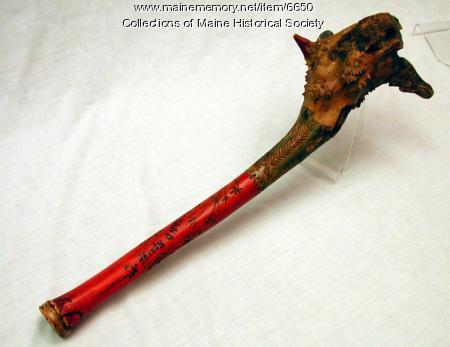TraditionalTool
Addicted to ArboristSite
I suspect mid 1800s. Quite decent shape for such an old tool, heh?Nice old axe TT, how old you reckon it is.
Here's what really makes the axe a decent one, look at the other side of the blade, where the chisel edge resides:
Notice there's a line that extends across the length of the blade's edge, about a 1/8" - 1/4" up from the edge. That is because the blade is laminated with different types of steel. Blacksmiths/Bladesmiths do this as a way to get a durable edge that will stay sharp for longer periods, as well as holding up in use. The softer steel on top acts as a dampener so that the blade doesn't chip when you use it, yet the bottom layer is a much harder and higher carbon steel that will retain a sharp edge well. If you used all higher carbon steel for the entire axe head, it would be brittle, and would chip easier in use. It is the higher carbon steel that gets tempered in the forge, so that it will retain an edge, but it is the softer steel with less carbon that acts as the dampener.
I had another DR Barton, so knew that this is a good quality axe, I didn't expect to get it so cheaply, honestly...
I agree we have it easier, but you would be surprised at what can be done with a sharp axe. In freshly cut green timber, it doesn't take as much to slice through some of it as you would think. It is possible to build a home using only hand tools, but that would be extreme, even today.:agree2: very coolIt really makes you think about how easy we have it these days. (Not really better, just easier).
Often Dik Proenneke's (mispelled on purpose for forum software) name will come up, as he built a home in Alaska that a DVD was made out of, Alone in the Wilderness. Don't take this the wrong way, but what he built was nothing like what I'm attempting to build, that home he built up by twin lakes is like a dog house in comparison, but he did build it with only a few hand tools. And he was a very talented craftsman, not only on the small home he built, but the tools, cache, and other stuff he build up there as well...
So, in short we do have it easier these days, but a lot can be done with a few similar hand tools given a strong will.
That said, it's a ***LOT*** of work to build a log home...EVEN with a chainsaw...at least the way I'm doing it...
Last edited:







